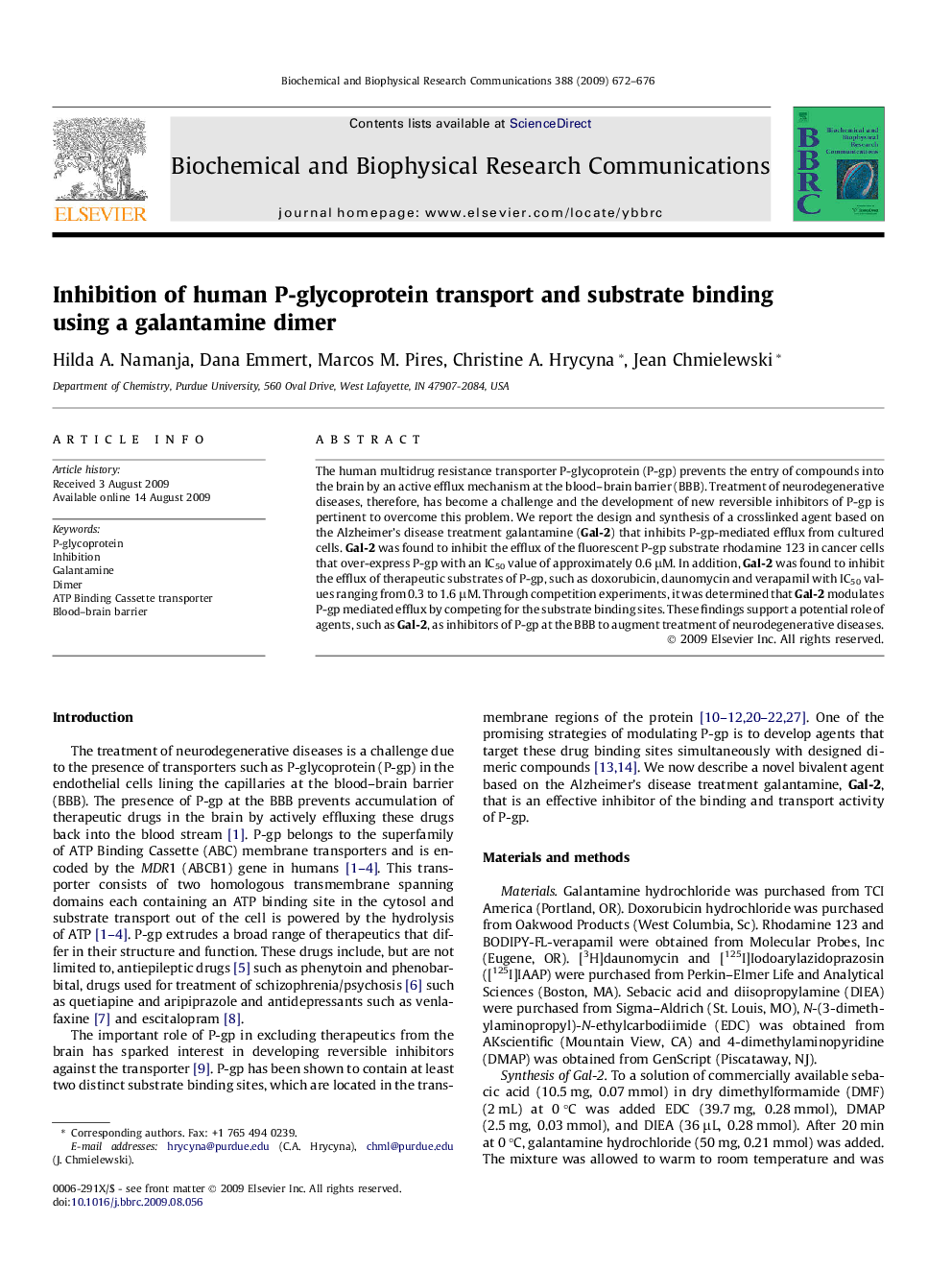| Article ID | Journal | Published Year | Pages | File Type |
|---|---|---|---|---|
| 1932953 | Biochemical and Biophysical Research Communications | 2009 | 5 Pages |
The human multidrug resistance transporter P-glycoprotein (P-gp) prevents the entry of compounds into the brain by an active efflux mechanism at the blood–brain barrier (BBB). Treatment of neurodegenerative diseases, therefore, has become a challenge and the development of new reversible inhibitors of P-gp is pertinent to overcome this problem. We report the design and synthesis of a crosslinked agent based on the Alzheimer’s disease treatment galantamine (Gal-2) that inhibits P-gp-mediated efflux from cultured cells. Gal-2 was found to inhibit the efflux of the fluorescent P-gp substrate rhodamine 123 in cancer cells that over-express P-gp with an IC50 value of approximately 0.6 μM. In addition, Gal-2 was found to inhibit the efflux of therapeutic substrates of P-gp, such as doxorubicin, daunomycin and verapamil with IC50 values ranging from 0.3 to 1.6 μM. Through competition experiments, it was determined that Gal-2 modulates P-gp mediated efflux by competing for the substrate binding sites. These findings support a potential role of agents, such as Gal-2, as inhibitors of P-gp at the BBB to augment treatment of neurodegenerative diseases.
